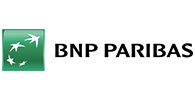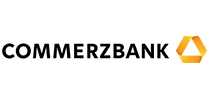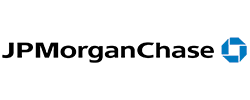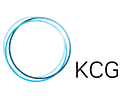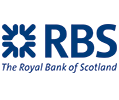Forex Trading: Understanding How the World’s Most Liquid Market Works
Forex Trading: How the Most Liquid Market Works
When it comes to global financial markets, none are as large or as liquid as the forex market (foreign exchange). With over $7.5 trillion traded daily, it surpasses all other markets, including equities, commodities, and bonds. But how does this enormous marketplace function, and what makes it so attractive to traders? In this article, we’ll explore the core mechanics of forex trading, shedding light on its liquidity, the role of brokers, and the platforms that help traders succeed.
What is the Forex Market?
The forex market is where currencies are bought and sold. Unlike centralised stock exchanges, forex trading happens over-the-counter (OTC), meaning trades are conducted directly between buyers and sellers, usually through a network of banks, brokers, and financial institutions. The market operates 24 hours a day, five days a week, which adds to its liquidity and global accessibility.
Liquidity refers to how easily an asset can be bought or sold without affecting its price. The sheer volume of participants in the forex market—ranging from large institutions to retail traders—ensures that currency pairs can be traded quickly and efficiently, making it the most liquid market in the world.
Key Participants in the Forex Market
- Central Banks: Central banks like the U.S. Federal Reserve and the European Central Bank influence the forex market by setting monetary policies, adjusting interest rates, and intervening in currency markets when needed.
- Institutional Investors: Hedge funds, asset managers, and large financial institutions use the forex market for hedging and speculation.
- Retail Traders: These are individual traders, often using online platforms provided by forex brokers, to participate in the market. Retail trading has surged in popularity due to the accessibility of trading platforms like MetaTrader 4 and ECN trading.
- Brokers: Brokers play an essential role in providing access to the forex market. The best forex brokers offer low commissions, raw spreads, and direct market access (DMA) to liquidity providers, ensuring fast trade execution and competitive pricing.
How Does Forex Trading Work?
In forex trading, participants buy one currency while simultaneously selling another. These trades are executed in currency pairs, such as EUR/USD (the euro against the U.S. dollar). The first currency in the pair is the base currency, and the second is the quote currency. The exchange rate shows how much of the quoted currency is required to buy one unit of the base currency.
For example, if EUR/USD is trading at 1.2000, it means 1 euro equals 1.20 U.S. dollars. A trader might buy this pair if they believe the euro will appreciate relative to the dollar or sell it if they believe the euro will weaken.
What makes Forex the most liquid market?
The forex market’s liquidity is driven by its sheer size and the number of participants trading around the clock. This high liquidity has several advantages for traders:
- Tight Spreads: High liquidity keeps the difference between buying and selling prices (spreads) narrow, making it cost-effective for traders. Some brokers offer raw spreads, meaning they provide the interbank spread without markup, resulting in lower trading costs.
- Low Slippage: Because there are always buyers and sellers available, orders are filled quickly, reducing the risk of slippage (the difference between the expected price of a trade and the price at which it is actually executed).
- Flexible Position Sizes: With access to large pools of liquidity, traders can execute both small and large trades seamlessly. Platforms like MetaTrader 4 offer tools to manage trades effectively, whether you’re a retail trader or a large institution.
The Role of Technology in Forex Trading
Modern trading platforms like MetaTrader 4 (MT4) have revolutionised how individuals engage in forex trading. These platforms offer customisable charts, real-time data, technical indicators, and automated trading strategies. Whether you’re using a forex demo account to practice or engaging in ECN trading, technology plays a crucial role in shaping the trading experience.
With MT4, traders can also execute algorithmic trading using Expert Advisors (EAs), which allows trades to be automated based on predefined rules. This feature helps traders react faster to market movements without being tied to their screens 24/7.
Essential Strategies for Forex Success
While liquidity provides opportunities, traders must adopt sound strategies to succeed in the forex market. Some of the core strategies include:
- Risk Management: Forex trading offers leverage, which can magnify both gains and losses. Traders should use stop-loss orders and position sizing to manage risk.
- Technical Analysis: Many traders rely on chart patterns, technical indicators, and historical data to predict future price movements. MT4’s technical tools are a staple for those engaged in forex trading.
- Economic Indicators: Forex markets are heavily influenced by global economic data, such as GDP, inflation rates, and central bank announcements. Traders must stay informed about economic events to make well-timed decisions.
Why Forex Trading is So Popular
The combination of high liquidity, low costs, and 24-hour access makes forex trading one of the most attractive financial markets for traders worldwide. Whether you’re a retail trader using a forex demo account to practice or a seasoned pro looking for the best forex broker to execute large trades with low commissions, the forex market offers something for everyone.
Conclusion:
In conclusion, understanding how the forex market works is crucial for anyone looking to engage in forex trading. From its massive liquidity to advanced platforms like MetaTrader 4, there’s no shortage of opportunities in this market. But success requires a combination of knowledge, technology, and the right forex broker.
If you’re ready to explore the world of forex trading, check out FXCG for raw spreads, low commissions, and Direct Market Access (DMA) that help you succeed in the fast-paced forex environment.
before: How to Read Forex Charts: A Beginner’s Guide to Mastering Trading Strategies
next: Understanding and Overcoming Struggles in Forex Trading: Tips for Success


